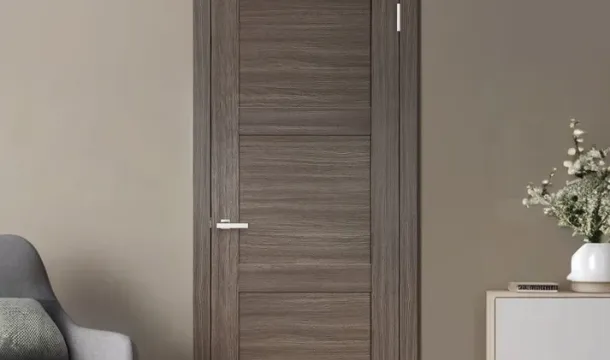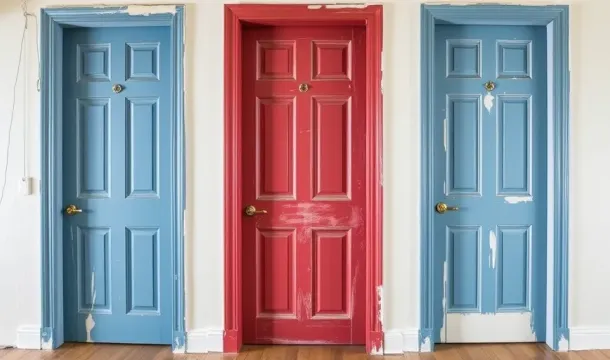A Complete Guide to Choosing Interior Doors for Canadian Homes
Popular Articles
Choosing the right interior doors for your home can greatly impact not only the design but also the overall functionality of your space. In Canadian homes, where climate, architectural style, and privacy needs vary, the decision on which doors to install is essential. This guide will walk you through the key considerations when selecting interior doors, from materials and styles to installation tips and budgeting.
1. The Role of Interior Doors in Home Functionality and Design
Interior doors are often an overlooked element of home design, but they serve several important roles beyond merely separating rooms. The right interior door can enhance privacy, improve soundproofing, and complement the overall aesthetic of your home. In Canadian homes, where open-concept designs are popular, doors play an important role in maintaining a balance between flow and division.
Choosing the right door means considering both its practical function and its contribution to the ambiance of your home. For instance, in smaller spaces, doors with high soundproofing properties can create much-needed privacy. In more open layouts, doors that blend with the overall design allow for a cohesive look. Whether you are renovating or building from scratch, interior doors are a critical component of the home that can either elevate or diminish your design vision.
2. Popular Materials for Interior Doors: Pros and Cons
Interior doors come in a variety of materials, each offering its own unique advantages and drawbacks. Understanding the strengths and limitations of each material is crucial, especially in a country like Canada, where seasonal changes can affect door performance.
- Wood: Solid wood doors remain a popular choice for their aesthetic appeal and natural insulation properties. They offer excellent soundproofing, and their timeless style suits a wide range of interiors. However, they require more maintenance than other materials, particularly in areas with high humidity, as wood can warp or swell.
- Glass: For those looking to add a modern touch, glass doors are an elegant option that enhances the flow of natural light between rooms. However, they offer less privacy and soundproofing than solid doors, making them better suited for areas like home offices or living spaces where privacy isn’t a primary concern.
- MDF and Composite: Medium-density fiberboard (MDF) and composite doors provide a cost-effective solution for homeowners seeking durability without breaking the bank. These doors resist warping and are available in a variety of finishes, making them an ideal option for high-traffic areas. Additionally, they are better suited to the Canadian climate as they are less susceptible to temperature fluctuations.
Choosing the right material should also involve considering the specific needs of each room. For instance, you may want to choose soundproof MDF doors for bedrooms or study rooms, while glass doors might be better suited for areas that benefit from natural light.
3. Exploring Different Door Styles for Canadian Homes
The style of your interior doors should complement the architectural style of your home as well as serve its functional purpose. In Canada, interior door styles have evolved, with options ranging from classic to modern, offering choices for every taste and space.
- Panel Doors: Panel doors are a versatile and timeless choice, suitable for both traditional and contemporary homes. These doors feature raised or recessed panels and are available in a wide range of designs, from simple two-panel doors to more intricate six-panel options. Their clean lines and classic look make them a popular choice for Canadian homes, particularly in bedrooms, dining rooms, and hallways.
- Sliding and Barn Doors: For smaller spaces or homes with a modern, rustic design, sliding or barn doors are increasingly popular. Sliding doors are great space-savers, as they don’t require the swing clearance of traditional hinged doors. They work well in places like closets or bathrooms. Barn doors, on the other hand, add a rustic touch and are often used as a statement piece in homes with an open floor plan.
- French Doors: French doors, with their glass panels, are often used to create a sense of openness between rooms while still offering the option to close off spaces. These doors are ideal for living rooms, dining rooms, or offices, where light flow is essential. However, they may not offer the same level of sound insulation or privacy as solid doors, so consider their placement carefully.
Each door style can drastically alter the feel of a room. It's important to choose a style that reflects the overall aesthetic of your home while ensuring it meets the functional needs of each specific area.
4. Installation Tips for a Professional Look
Proper installation is crucial for the performance and longevity of your interior doors. Even the highest-quality doors can fail to function properly if they’re not installed correctly. While DIY installation can be an attractive option for those looking to save on labor costs, professional installation is often recommended, especially in homes where temperature and humidity fluctuations are common, as is the case in many parts of Canada.
- Professional Installation: Hiring a professional ensures that the door will be installed with the correct alignment, minimizing the risk of issues like squeaky hinges, doors that don’t close properly, or gaps that let in drafts. A professional installer will also know how to address climate-specific challenges, such as ensuring proper sealing to keep out the cold in winter and retain cool air in summer.
- DIY Installation: If you choose to install doors yourself, be sure to follow best practices, such as leveling the door correctly, securing the hinges properly, and using the right tools for the job. DIY installation is feasible for simple doors, but for heavier or more complex styles like sliding or barn doors, hiring a professional is often the safer choice.
- Climate Considerations: In Canada, the climate plays a significant role in how well your doors will perform. Changes in temperature and humidity can cause doors to expand or contract, so it’s important to choose materials and installation techniques that account for these factors. Sealing and insulation around doorframes are also essential for energy efficiency, particularly during the harsh Canadian winters.
5. Budgeting and Choosing the Right Supplier in Canada
Budget is always a significant factor when choosing interior doors. The cost of doors can vary widely depending on the materials, style, and installation. To make the most of your investment, it's important to balance quality and affordability.
- Material and Style Impact on Cost: Wood doors tend to be more expensive than MDF or composite options, but they offer greater durability and soundproofing. Glass doors are also on the higher end of the price spectrum, while hollow-core doors are the most budget-friendly option. When considering the cost, remember that cheaper doors may require more maintenance or replacement in the long run.
- Choosing a Supplier: It’s essential to choose a reliable supplier that understands the Canadian climate and offers doors designed to withstand it. Look for suppliers that offer warranties, and ask about their installation services if you’re not planning on doing it yourself. Many Canadian manufacturers also provide eco-friendly options, which not only reduce your carbon footprint but also contribute to energy efficiency in your home.
- Eco-friendly Choices: As more Canadians become environmentally conscious, many are opting for eco-friendly doors made from sustainable materials or doors that offer better insulation and energy efficiency. These doors may come with a higher initial cost but can result in long-term savings on energy bills and a reduced environmental impact.
Choosing the right interior doors for your Canadian home involves more than just selecting a style that looks good. It requires thoughtful consideration of materials, functionality, climate, and budget. With the right doors, you can enhance both the aesthetic appeal and practical functionality of your home, adding value and comfort for years to come.
Popular Articles

Choosing the Perfect Interior Doors for Your Canadian Home

Soundproofing Interior Doors: Which Options Are Best for Your Home?
